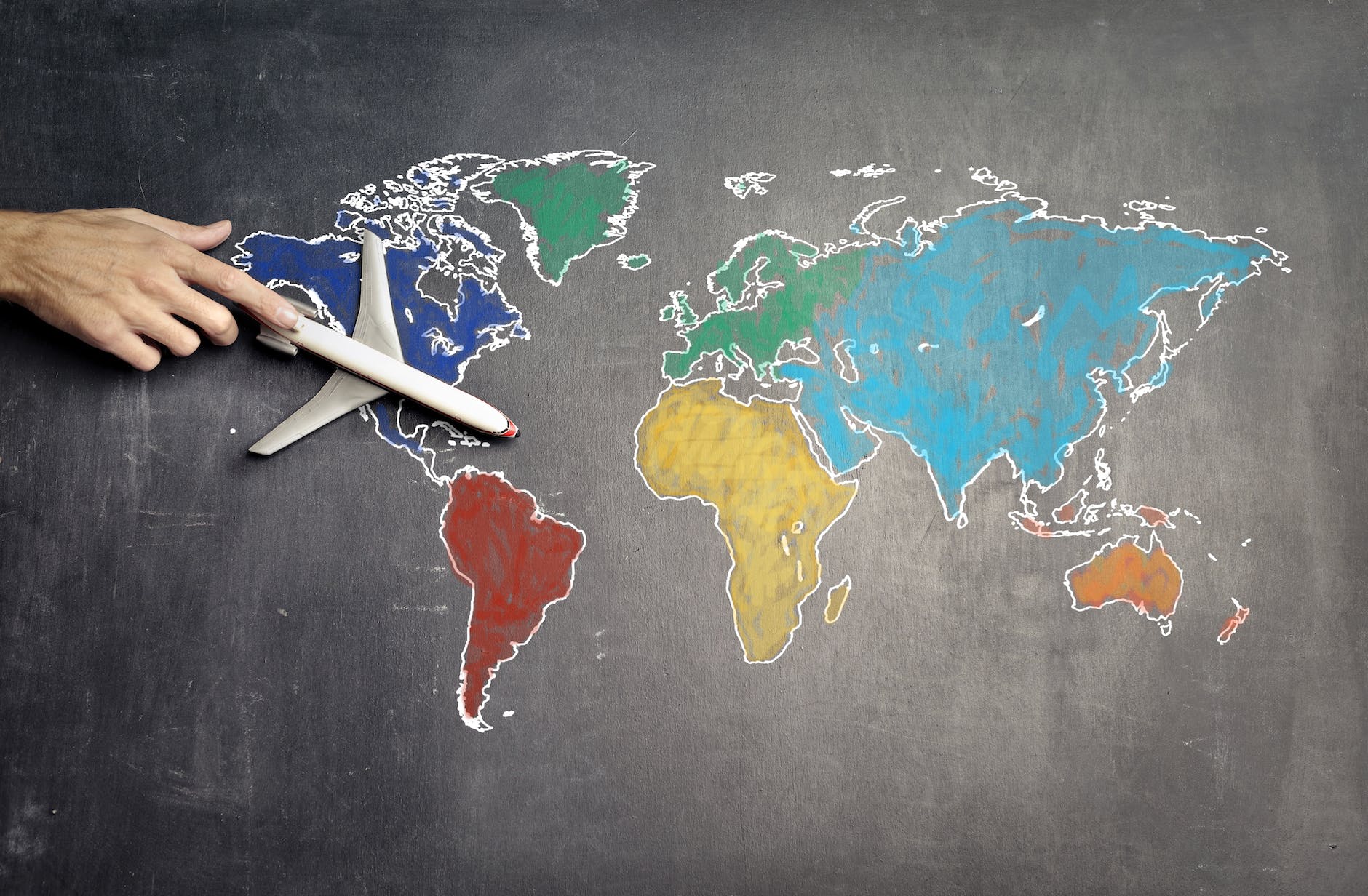In today’s interconnected world, have you ever wondered how globalization impacts different cultures and civilizations? The effects of globalization, driven by technological changes, have been far-reaching, leading to a significant loss of cultural diversity in nations. Traditional practices and values are gradually being eroded, as the world becomes more homogenized through the process of mcdonaldization. Unique identities and traditions are at risk of fading away, raising concerns about the preservation of our rich cultural heritage. This loss is particularly evident in third-world countries where indigenous languages and customs are rapidly disappearing.
The dominance of the English language, for instance, has become pervasive worldwide, affecting local dialects, indigenous cultures, and languages. It is essential to recognize that this loss goes beyond language; it encompasses various aspects such as art forms, rituals, and ways of life that define a particular culture and civilizations. To address this issue effectively, awareness and action are crucial. By understanding the impact of globalization on culture and taking steps to preserve our diverse heritage, we can ensure that future generations inherit a vibrant and culturally rich world that respects the indigenous people and different societies.
Keywords: third world, indigenous languages, different languages
Impact of Globalization on Cultural Diversity: Threats and Consequences
Globalization’s Promotion of Western Ideals as the Global Norm
Globalization, with its rapid spread of ideas, technologies, and products across borders, has posed a significant threat to cultural diversity worldwide. One of the key concerns is how globalization promotes Western ideals as the global norm, while civilizations from different society are often overshadowed or marginalized due to technological changes. As Western cultures dominate the global stage, traditional practices and values from other parts of the world are often overshadowed or marginalized by the process of mcdonaldization.
This dominance can be seen in various aspects of life, including fashion trends, entertainment industries, and even language. For example, English has become the lingua franca in many international settings, leading to a decline in indigenous languages and the mcdonaldization of different societies. This homogenization not only erodes cultural diversity but also diminishes opportunities for non-Western cultures and individual countries to express themselves authentically.
Dilution of Indigenous Cultures through Migration and Urbanization
Another consequence of globalization is the dilution of indigenous cultures due to increased migration and urbanization, which can lead to cultural imperialism and cultural erasure. As people from the third world move from rural areas to cities in search of better economic prospects or refuge from conflict, they often leave behind their traditional ways of life and different languages.
In urban centers influenced by globalization, local customs, including indigenous cultures, may be abandoned in favor of more “modern” practices. This shift can result in a loss of unique cultural traditions, such as those passed down through generations in American culture, that have been influenced by third world nations. Moreover, as younger generations adopt urban lifestyles and embrace globalized trends, there is a risk that traditional knowledge and skills from indigenous cultures and American culture will fade away.
Undermining Local Industries through Multinational Corporations
Multinational corporations play a significant role in shaping cultural landscapes around the world, including indigenous cultures. While they offer economic opportunities for communities and countries, their dominance can also undermine local industries and lead to cultural assimilation, including American culture.
When multinational corporations establish themselves in developing countries or regions with rich cultural heritage, they often introduce mass-produced goods that compete with local craftsmanship, impacting the economic well-being of indigenous cultures and nations. As a result, traditional artisans struggle to compete, and their industries may decline or disappear entirely. This not only erodes cultural diversity as unique artistic traditions fade away, but also challenges the preservation of third world and davos culture.
Cultural Appropriation: Adopting Elements without Understanding or Respect
Cultural appropriation is another consequence of globalization that can lead to a loss of cultural diversity in local cultures, countries, and nations. It occurs when elements from one culture are adopted by another without proper understanding or respect for their original significance.
In today’s interconnected world, cultural appropriation has become more prevalent, particularly in the realm of fashion, music, and art across nations and countries. For instance, traditional clothing designs or sacred symbols from various nations may be commodified and worn as mere fashion statements, devoid of their cultural context. This practice not only diminishes the value and meaning behind these symbols but also perpetuates stereotypes and trivializes cultures.
Examples of Loss of Culture Due to Globalization: Unveiling the Erosion
Disappearing Traditional Crafts and Art Forms
One of the unfortunate consequences of globalization is the erosion of traditional crafts and art forms. As mass-produced goods flood global markets, local artisans struggle to compete with cheap, factory-made alternatives. This has led to a decline in the production and appreciation of unique handmade items that were once an integral part of various cultures. Additionally, cultural erasure and cultural imperialism have further exacerbated this issue, as nations face the risk of losing their distinct artistic heritage.
Examples:
- The intricate pottery techniques passed down through generations in rural villages, representing local cultures, are being replaced by mass-produced ceramic products due to cultural globalization and cultural imperialism, leading to the erasure of traditional practices.
- Indigenous weaving methods, such as Navajo rug making or Kente cloth production, are slowly fading away as cheaper machine-made textiles dominate the market due to cultural imperialism and cultural globalization.
- Woodcarving traditions that were once celebrated for their craftsmanship are being overshadowed by plastic replicas churned out by industrial manufacturing, as a result of cultural globalization and cultural imperialism.
Extinction of Indigenous Languages
As English becomes the dominant language for international communication, indigenous languages face the threat of extinction. With globalization facilitating global trade and cultural exchange, there is an increasing emphasis on learning English as a means to access better economic opportunities. Consequently, younger generations often prioritize learning English over their native tongues.
Examples:
- The Maori language in New Zealand is at risk due to widespread use of English in education, media, and cultural globalization. Cultural imperialism poses a threat to the preservation of the Maori language.
- Many Native American languages have already become extinct or are critically endangered as younger generations adopt English as their primary language due to cultural globalization.
- In remote regions of Africa, tribal languages are rapidly losing speakers due to cultural globalization, as communities increasingly embrace more widely spoken languages like French or English.
Commercialization’s Impact on Rituals and Ceremonies
Rituals and ceremonies that hold deep cultural significance can lose their authenticity when they are commercialized for tourism purposes. When traditional practices become showpieces for tourists rather than genuine expressions of culture, they can lose their true essence and meaning.
Examples:
- Sacred dances performed during religious festivals may be altered or simplified to cater to the expectations of tourists, diluting their cultural significance.
- Traditional wedding ceremonies that were once intimate and steeped in local customs may now be transformed into staged events for tourist entertainment due to cultural globalization.
- Indigenous rituals tied to agriculture or harvest seasons may be modified or exaggerated due to cultural globalization, leading to a distortion of their original purpose.
Erosion of Culinary Traditions by Fast Food Chains
Local cuisines often bear the brunt of globalization’s impact as fast food chains gain popularity worldwide. The convenience and ubiquity of fast food options have led to a decline in traditional culinary practices, with many people opting for standardized meals over regional delicacies.
Examples:
- Street food vendors offering unique local dishes struggle to compete with multinational fast food chains that offer familiar, uniform menus in the era of cultural globalization.
- Traditional cooking methods and recipes passed down through generations are being forgotten as processed and packaged foods, influenced by cultural globalization, become more prevalent.
- Cultural dietary habits that were once rooted in local traditions are being replaced by globalized eating patterns influenced by fast food consumption.
The Spread of Evangelical Protestantism as a Consequence of Globalization
Evangelical Protestantism gains popularity through missionary activities facilitated by globalization.
Evangelical Protestantism has experienced significant growth in recent years, thanks in part to the global connections facilitated by globalization. Missionary activities have played a crucial role in spreading this form of Christianity to various corners of the world. Missionaries from evangelical organizations travel to different countries, often targeting communities that may be vulnerable or open to new religious ideas.
For example:
- In European countries such as Poland and Hungary, where traditional Catholicism has long been dominant, evangelical Protestantism has made significant inroads due to cultural globalization. Missionaries from North America and other parts of Europe have actively worked to spread their beliefs, establishing churches and engaging with local populations as part of the cultural globalization phenomenon.
- Similarly, in the Middle East, where Islam is the predominant religion, evangelical missionaries have sought to convert individuals through various means, contributing to cultural globalization. They provide humanitarian aid, education opportunities, and social support while promoting their religious teachings.
Traditional religious beliefs face challenges from new ideologies introduced through global connections.
As globalization brings people closer together and fosters cultural exchange, traditional religious beliefs often find themselves facing challenges from new ideologies that are introduced through these global connections. The influx of different perspectives can lead individuals to question their own faith and consider alternative belief systems.
For example:
- In indigenous communities around the world, globalization has brought exposure to different ways of life and belief systems. As a result, some individuals may choose to adopt evangelical Protestantism over their traditional spiritual practices.
- In countries where Christianity was historically dominant but faced decline due to secularization or other factors, evangelical movements fueled by globalization have provided an alternative for those seeking spiritual fulfillment outside established traditions.
Conversion efforts often target vulnerable communities, leading to significant shifts in religious practices.
One consequence of the spread of evangelical Protestantism through globalization is its focus on targeting vulnerable communities for conversion efforts. These communities may be economically disadvantaged, politically marginalized, or socially isolated. Missionaries often provide aid and support to these communities as part of their evangelical efforts, which can lead to significant shifts in religious practices.
For example:
- In impoverished areas where access to basic necessities is limited, evangelical missionaries may offer humanitarian aid such as food, clean water, and medical assistance. While this assistance is undoubtedly beneficial, it can come with the expectation that individuals will convert to evangelical Protestantism, thus contributing to cultural globalization.
- Indigenous communities that have faced historical oppression or marginalization due to cultural globalization may be particularly susceptible to conversion efforts. The promise of social support and empowerment through embracing a new belief system can be appealing to those who have long been marginalized.
The spread of evangelical Christianity can result in conflicts with indigenous spiritual beliefs.
As evangelical Protestantism gains traction around the world, conflicts can arise between this new ideology and indigenous spiritual beliefs. These conflicts stem from differences in core tenets and practices, as well as the potential erosion of cultural traditions and values.
For example:
- In some instances, indigenous communities may view the spread of evangelical Protestantism as a threat to their cultural identity.
Analyzing the Economic Dimension: How Globalization Affects Cultural Identity
Economic globalization promotes consumerism, which can lead to cultural commodification and loss of authenticity.
In today’s globalized world, economic growth is often prioritized above all else. This emphasis on economic development has led to a rise in consumerism, where the acquisition of material possessions becomes a central focus. As people strive to keep up with the latest trends and products, cultural identities can become commodified and lose their authenticity.
For example:
- Traditional clothing that was once worn for special occasions may now be mass-produced and sold as trendy fashion items due to cultural globalization.
- Local handicrafts that were once made by skilled artisans are now replicated by machines, diminishing the uniqueness, craftsmanship, and cultural globalization associated with them.
This shift towards consumerism not only erodes cultural traditions but also perpetuates a cycle of dependence on global markets for identity expression.
Multinational corporations promote standardized products that disregard local customs and preferences.
Multinational corporations have a significant influence on shaping global markets, contributing to cultural globalization. Their aim is often to create standardized products that can be easily marketed and sold across different regions, disregarding the diverse customs and preferences of local communities.
For instance:
- Fast-food chains offering uniform menus worldwide undermine regional cuisines due to cultural globalization.
- Global clothing brands producing generic designs neglect traditional attire specific to certain cultures in the era of cultural globalization.
By promoting homogeneity in consumer goods, multinational corporations contribute to the erosion of unique cultural practices and expressions.
Economic disparities caused by globalization can lead to the marginalization of certain cultural groups.
Globalization has not benefited all communities equally. The economic disparities it creates can result in the marginalization of certain cultural groups whose identities are deeply intertwined with their traditional occupations or ways of life. As wealth accumulates in certain regions or industries, others are left behind, leading to social inequalities that impact cultural identity.
Consider these examples:
- Indigenous communities relying on subsistence farming or traditional crafts may struggle to compete with mass-produced goods flooding the market in the era of cultural globalization.
- Rural areas dependent on agriculture may face challenges as global markets favor large-scale industrial farming practices.
As these cultural groups face economic pressures, their ability to maintain and pass down their unique identities becomes increasingly threatened.
Traditional occupations and livelihoods are threatened as global markets favor mass production.
Globalization often promotes efficiency and cost-effectiveness through mass production. While this approach benefits economies of scale, it can pose a threat to traditional occupations and livelihoods that rely on localized craftsmanship or specialized skills.
Here are some instances:
- Artisans who produce handmade pottery or textiles may struggle to compete with cheaper, factory-made alternatives.
- Farmers practicing traditional agricultural methods may find it challenging to adapt to mechanized farming techniques favored by global markets.
The shift towards mass production not only endangers the economic viability of these occupations but also puts at risk the cultural knowledge and heritage associated with them.
Social Activities and Beliefs: Examining the Influence of Globalization on Culture
Global media influences social norms, leading to the adoption of Western lifestyles and values.
In today’s interconnected world, global media plays a significant role in shaping social norms and influencing cultural practices. With the rise of television, movies, and the internet, people from different cultures are exposed to a wide range of content that often promotes Western lifestyles and values. This exposure can lead to the adoption of these foreign practices, sometimes at the expense of local traditions.
For example:
- The popularity of American TV shows has led to an increased interest in American culture worldwide. People may start emulating American fashion trends, consuming American foods, or even adopting American ideologies.
- The influence of Hollywood movies has resulted in the spread of Western dating customs and relationship dynamics across different societies.
- The prevalence of English-language music has led to a shift in musical preferences among younger generations towards Western genres.
Social media platforms facilitate the spread of popular culture, overshadowing local traditions.
The advent of social media platforms has further accelerated the spread of popular culture around the globe. These platforms provide individuals with easy access to information about different cultures, but they also create an environment where certain trends dominate while local traditions may get overshadowed.
For instance:
- TikTok’s algorithm-driven content recommendation system often promotes viral challenges or dance routines from specific regions or countries. This can result in a surge in popularity for those particular cultural practices while others remain relatively unknown.
- Instagram influencers have a significant impact on shaping beauty standards globally. Certain body types or beauty ideals become more prevalent as they are widely shared and celebrated on social media platforms.
Globalization can disrupt traditional family structures and community dynamics.
As globalization continues to reshape our world, traditional family structures and community dynamics are not immune to its effects. Economic opportunities abroad often lead individuals to migrate from their home countries, which can result in the breakdown of traditional family units and community ties.
Consider the following:
- In many cultures, extended families living together in close proximity is a common practice. However, as individuals seek better economic prospects in different societies, they may have to leave their families behind or live apart from them. This can lead to a loss of traditional familial support systems.
- Increased mobility and urbanization due to globalization have also resulted in changes in community dynamics. People are more likely to interact with diverse groups of individuals, which can dilute local cultural practices and traditions.
Changing gender roles influenced by globalization impact cultural practices related to marriage and parenting.
Globalization has played a significant role in challenging traditional gender roles across different societies. As women gain more access to education, employment opportunities, and exposure to different cultures through media platforms, there has been a shift in societal expectations regarding marriage and parenting.
Here are some examples:
- In many cultures, arranged marriages were once the norm. However, as people are exposed to alternative relationship models through globalization, there has been an increase in individuals choosing their partners based on personal preferences rather than familial arrangements.
Exploring the Pros and Cons: Balancing the Effects of Cultural Globalization
Appreciating Diverse Cultures through Globalization
Cultural exchange facilitated by globalization allows us to appreciate and understand the richness of diverse cultures. As people from different parts of the world interact, they bring with them their unique traditions, customs, and ways of life. This cultural diversity enhances our understanding of humanity as a whole.
Through globalization, we have the opportunity to explore various art forms, music genres, culinary practices, and traditional rituals from different corners of the globe. For instance:
- In music, we witness fusion bands that blend traditional instruments with modern beats, creating captivating melodies that resonate with audiences worldwide.
- In cuisine, fusion restaurants offer innovative dishes that combine flavors and techniques from multiple cultures. These culinary creations provide a delightful experience for adventurous food lovers.
- In fashion, designers draw inspiration from diverse cultural aesthetics to create stunning garments that reflect a global tapestry of styles.
The Power of Fusion: Innovative Artistic Expressions
One positive aspect of cultural globalization is how it encourages the fusion of different cultural elements in artistic expressions. When artists incorporate influences from various cultures into their work, they create something entirely new and innovative.
This cross-pollination can be seen in literature, where authors weave together storytelling techniques from different cultures to craft compelling narratives. It can also be observed in visual arts, where artists merge traditional motifs with contemporary mediums to produce thought-provoking pieces.
The fusion of cultural elements not only brings fresh perspectives but also challenges societal norms by breaking down barriers between different artistic traditions. This encourages creativity and pushes boundaries within the realm of art itself.
Amplifying Marginalized Voices: Empowerment through Global Connections
Globalization has provided marginalized communities with a platform to amplify their voices and advocate for their rights on an international scale. Through social media platforms and online networks accessible across borders:
- Indigenous communities can raise awareness about their struggles for land rights and cultural preservation.
- Minority groups can share their experiences of discrimination, fostering empathy and understanding among a global audience.
- Activists fighting for gender equality, LGBTQ+ rights, and other social justice causes can connect with supporters worldwide, creating powerful movements for change.
The ability to connect globally has empowered these communities to challenge oppressive systems and demand equal treatment. By sharing their stories and experiences, they contribute to the ongoing dialogue on inclusivity and diversity.
Cultural Imperialism: The Erasure of Unique Identities
However, it is essential to acknowledge that cultural globalization also carries the risk of cultural imperialism. As dominant cultures spread across the globe, there is a danger of unique identities being overshadowed or even erased.
When certain cultures become more prominent due to globalization’s influence, smaller communities may feel pressured to conform or abandon their distinct traditions in favor of more popular ones. This homogenization can lead to the loss of diverse cultural practices that have shaped societies for centuries.
It is crucial to strike a balance between appreciating different cultures while ensuring that no culture dominates or erases others.
Reflecting on the Loss of Culture in the Era of Globalization
In conclusion, the examples presented highlight the significant loss of culture that occurs due to globalization. The impact of globalization on cultural diversity has resulted in threats and consequences that cannot be ignored. From the erosion of traditional practices and customs to the spread of evangelical Protestantism, it is evident that globalization plays a substantial role in shaping cultural identity.
The economic dimension must also be considered when examining how globalization affects cultural identity. As societies become more interconnected, there is a risk of homogenization, where unique cultural traits are overshadowed by global consumerism. This can lead to a dilution of cultural values and traditions.
Moreover, social activities and beliefs are heavily influenced by globalization. Traditional forms of entertainment, rituals, and celebrations are often replaced or modified to cater to global standards. The influx of foreign media and ideologies can challenge local norms and erode cultural authenticity.
While there are both pros and cons associated with cultural globalization, it is crucial to strike a balance between preserving cultural heritage and embracing the benefits brought about by increased connectivity. Recognizing the importance of safeguarding diverse cultures while fostering intercultural exchange can help mitigate some negative effects.
To address these challenges, individuals should actively engage in initiatives that promote their own culture’s preservation while appreciating others’. By supporting local artisans, participating in community events, and valuing indigenous knowledge systems, we can contribute to maintaining vibrant cultural landscapes amidst globalization’s influence.
In conclusion, it is essential for us all to reflect on the loss of culture caused by globalization. We must recognize its impacts on our diverse world and take action to preserve our rich heritage for future generations.
FAQs
Q: Can I still embrace my culture while benefiting from globalization?
A: Absolutely! Embracing your culture does not mean isolating yourself from global influences. You can celebrate your traditions while engaging with other cultures through respectful exchanges and appreciating their unique contributions.
Q: How can I protect my cultural identity in the face of globalization?
A: One way to protect your cultural identity is by actively participating in cultural events and supporting local artisans. By valuing and promoting your traditions, you contribute to preserving your cultural heritage amidst the forces of globalization.
Q: What are some examples of cultures that have successfully adapted to globalization without losing their authenticity?
A: There are numerous examples of cultures that have successfully adapted while maintaining their authenticity. For instance, Japan has embraced modernity while preserving its traditional arts, such as tea ceremonies and kimono-making. Similarly, Indigenous communities worldwide continue to practice their customs while engaging with global issues.
Q: Is it possible for cultures to benefit from globalization?
A: Yes, cultures can benefit from globalization through increased exposure and opportunities for intercultural exchange. Globalization allows for the sharing of ideas, knowledge, and innovations across borders, fostering creativity and growth within societies.
Q: How can we ensure that cultural diversity is valued in a globalized world?
A: Valuing cultural diversity requires embracing inclusivity and respecting different perspectives. Education plays a crucial role in promoting intercultural understanding, while policies supporting multiculturalism can help preserve diverse identities in a globalized world.



